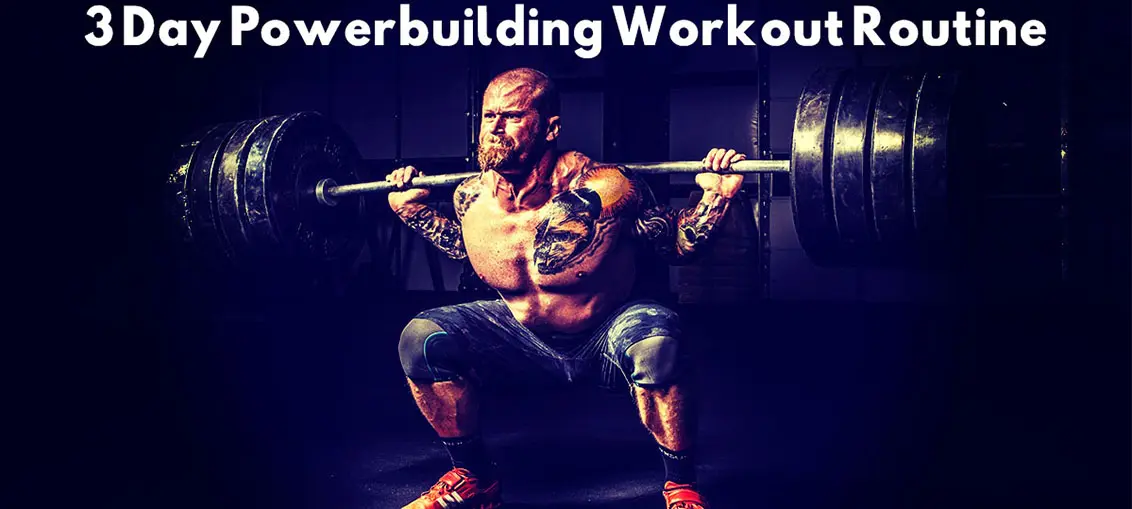
Jump To A Section
| Workout Goal | Build Mass |
|---|---|
| Workout Type | Powerbuilding Split |
| Training Level | Beginner/Intermediate |
| Program Duration | 12 Weeks |
| Days Per Week | 3 |
| Time Per Workout | 45-75 Minutes |
| Equipment Required | Barbell, Dumbbell, Machines |
| Workout PDF | 3 Day Powerbuilding Workout Routine Download |
What is Powerbuilding?
First off, powerbuilding programs are not new. The term powerbuilding is usually used to describe a certain workout program structure. These programs are tailored toward those who want strength and aesthetics. Really, these programs are best for a large majority of the average gym population.
We all want to get stronger and enjoy lifting, but we also want to improve our body composition. Competing is generally out of the question — but that isn’t always the case.
Many of these programs — including this one — starts with a compound movement trained in the lower rep range, and moves onto a bodybuilding focus on accessory lifts. There are many formats, but generally a powerbuilding workout routine will either be a push/pull, upper-lower split, or a powerlifting-style split.
The Difference Between Bodybuilding, Powerlifting, and Bodybuilding
I’ve noticed a trend of other strength athletes migrating to the wonderful sport of powerlifting. Whether they are tired of the culture, the subjective judging criteria of bodybuilding, or even the politics involved in the sport… athletes are turning to a powerbuilding way of training. Nothing beats breaking personal records, building muscle, and training with the intent of a bodybuilder.
Bodybuilding
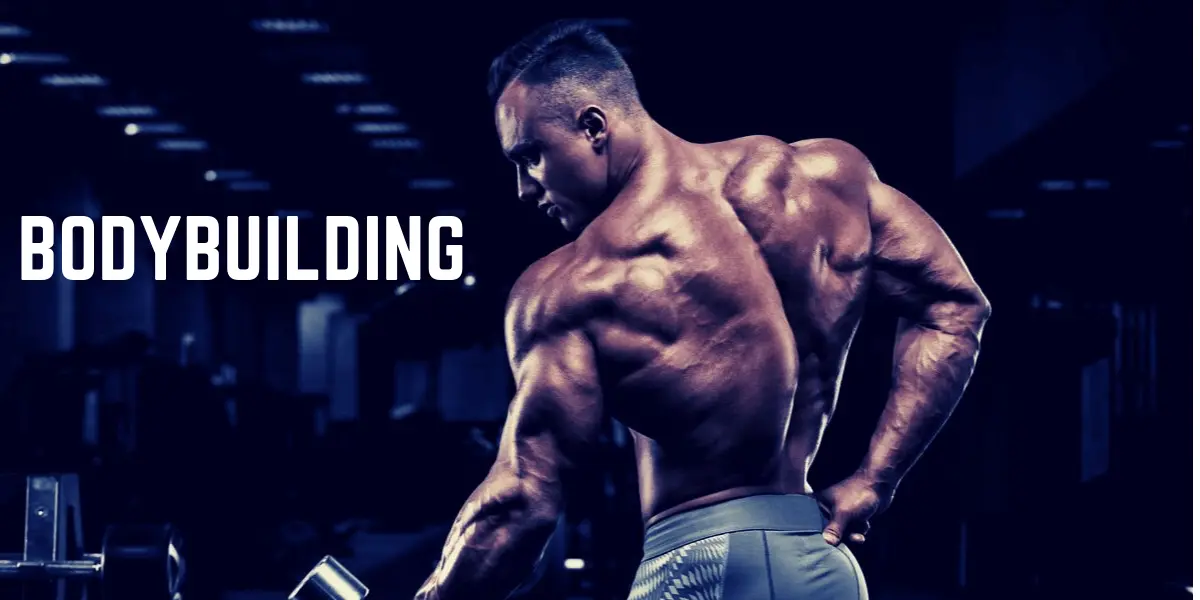
Bodybuilders burn off any nonessential body fat, train for hypertrophy, and focus on creating a symmetrical aesthetic body.
Bodybuilding sculpts your body by keeping meticulous track of the caloric intake, performing a lot of conditioning, and lots of volume for hypertrophy. This allows the body to build muscle while keeping fat gain minimal.
Powerlifting
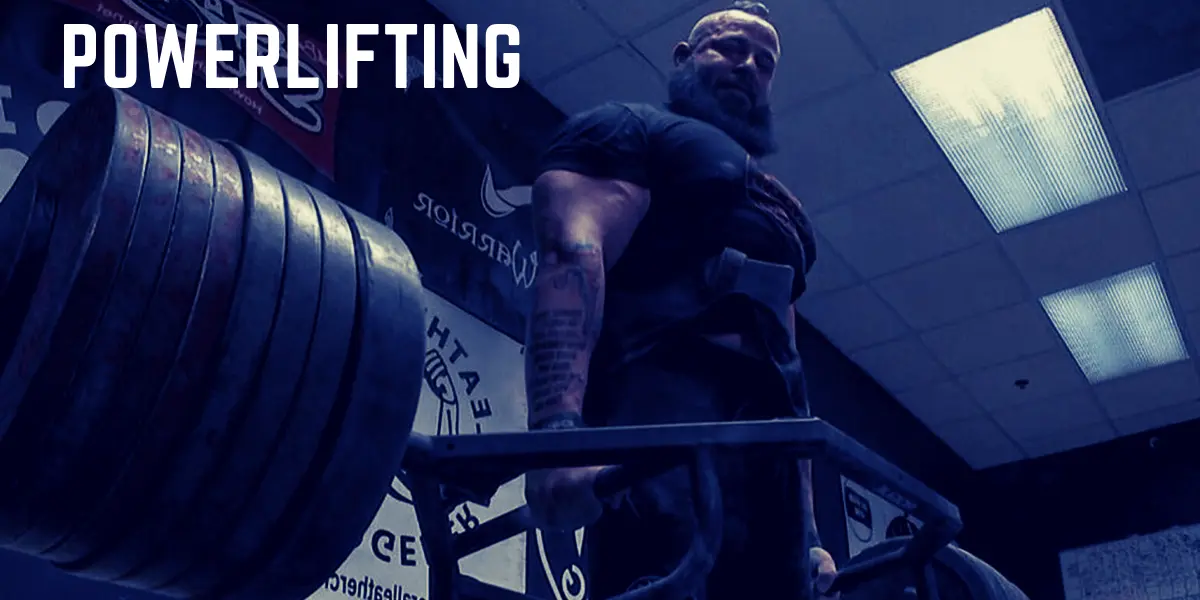


Powerlifters tend to have more body fat than bodybuilders… but that isn’t always the case. Truth be told, food makes you stronger. Food is anabolic. Food builds muscle and improves your strength, but it will pack on the fat.
It’s a double edged sword.
Powerlifters train to lift the most weight possible in the squat, bench, and deadlift. Competition includes weight classes in which you have three attempts at the squat, bench, and deadlift to obtain your highest total. Your total is the combination of all three of your lifts.
Bodybuilding focuses on building muscle through high reps. Powerlifting focuses on your nervous system by improving your strength.
Powerbuilding
Powerbuilding is what the average gym goer is looking for — a better looking physique, to be able to carry all of the groceries in one trip, and to be able to bench three wheels per side.
They focus on eating nutritious foods, but they aren’t worried about gaining a small amount of fat in exchange for stronger lifts. They may slack on their cardio, but they also know the better their conditioning, the more weight they can lift.
Powerbuilding is fun because you can “chase the pump” like a bodybuilder, but you can bend bars and break PRs training like a powerlifter.
Goal Of This 3 Day Powerbuilding Workout
There aren’t any promises that this powerbuilding routine will make you a top-level athlete, but you will certainly become one of the strongest people in your gym with consistent training.
You are going to learn nutrition from a bodybuilder’s perspective, you’ll build a solid foundation of strength, and you’ll pack on mass while you improve in all of your lifts. Even if you do not have a desire to get on a stage or compete, a strong muscle is big and a big muscle can be strong.
Are you ready to start cracking sidewalks?
Diet and Nutrition for Powerbuilding



When it comes to dieting as a powerbuilder, you will get the most out of this workout if you slow bulk. That means instead of eating whatever you can fit in your mouth, you calculate your TDEE and eat a few hundred extra calories per day.
This is going to allow you to build strength and muscle without packing on too much fat. Since your goal is to get stronger and build muscle without wrecking your physique, you’ll need to start counting your calories and keeping on track if you want to see the most improvement.
That means you need to start logging your food — there’s no other way around this. Otherwise, you risk spending weeks trying to build muscle and fail because you simply aren’t eating enough. Or worse, you could gain a lot more fat than you bargained for.
Protein
Eating enough protein is important for building muscle. Aim to eat around one gram of protein per pound of bodyweight. Realistically, if you weigh 200+ pounds, aiming to get close to 170 grams of protein is a good start.
Great Protein Sources
- Eggs – whole or egg whites
- Fish – salmon, tilapia, tuna, cod
- Chicken – boneless skinless breasts and thighs
- Turkey
- Pork – loin
- Beef – ground beef, steak
- Beans
- Dairy – cottage cheese, milk, yogurt
- Nuts, Nut Butters, and Seeds
Related: 11 Cheapest Good Protein Sources
Carbohydrates
Carbohydrates fuel our body and allow us to perform at optimal levels. Carbs caught a bad rap due to everything being full of sugars. Fuel your body with healthy, nutritious carbohydrates.
Great Carbohydrate Sources
- Quinoa
- Bananas
- Oats
- Buckwheat
- Potatoes – sweet, yellow
- Oranges
- Blueberries
- Grapefruit
- Kidney Beans
- Chick Peas
- Rice – black, brown, white
- Cottage Cheese
Related: The Science Behind Low-Carb Diets for Fat People
Fats
Even more demonized than carbohydrates, high-fat foods can be nutritious and help to aid in hormone function, memory, and the absorption of many specific nutrients.
Healthy fats create a feeling of satiety — meaning you stay fuller for longer. They slow down the digestion of carbohydrates and add so many wonderful flavors to food. The most healthy fats are monounsaturated and polyunsaturated fats — including omega-3 and omega-6 fatty acids.
Great Fat Sources
- Avocado
- Dark Chocolate
- Chia Seeds
- Eggs – whole
- Fatty Fish – fresh tuna, herring, mackerel, salmon, sardines, trout
- Nuts
- Nut and Seed Butter
- Olives
- Olive Oil
- Yogurt
- Dairy – cheese, sour cream, milk, butter



Struggling to Gain Weight?
Do you eat a lot and still struggle to add weight? It’s time to add some flavor and fats to your meals. These will increase the flavor in your foods, won’t be voluminous, and I mean who doesn’t like some extra butter or sour cream?
If you keep your weight consistent and need some tips to add calories into your diet, here are some of the best and healthiest ways to do so:
- Butter
- Cream cheese
- Sour cream
- Whole milk
- Heavy cream
- Cheese on everything
- Protein shakes
- Peanut butter
- Olive oil
- Extra dressing
Cooking
You really need to learn to cook. If you refuse to cook but eat a lot of prepared meals, adding a glob of sour cream to some mashed potatoes or using whole milk in your protein shakes are an easy way to boost your nutrition and calories.
Doing this is much healthier than running to your local fast food joint to get food. You’ll feel much better, have more energy, and you won’t have all of those upset stomachs.
Note: A little bit goes a long way, so be sure to know how many calories you are adding. Keep a set of measuring spoons and cups so you can get an accurate count of what you’re eating. Fats are calorie dense and it’s easy to get an extra 500 calories into your meal.
Cardio for Powerbuilding
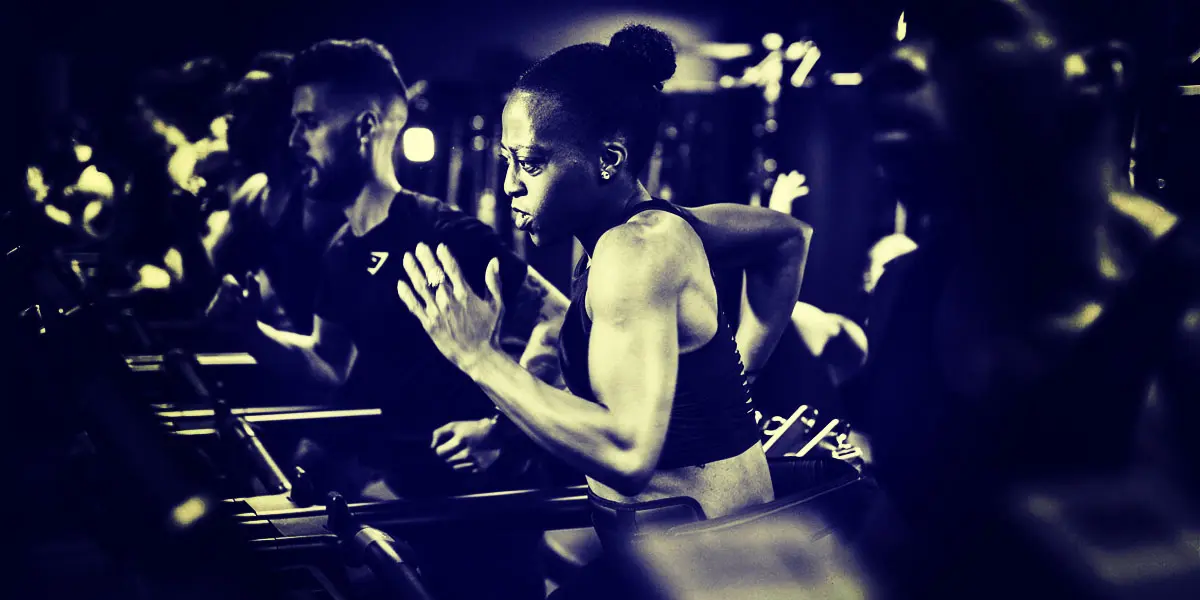


Your level of conditioning is one of the most important things you can work on to improve your lifts, endurance, and stamina. Improving your conditioning will improve other areas of life outside of the gym. This particular routine focuses a bit on conditioning, core strength, and mobility.
Once you start lifting relatively heavier weights, your form will start to break down due to muscle weakness, lack of conditioning/muscle endurance and mobility issues. That’s what we are addressing.
Warming Up
For your pre-workout warm up, start by walking for 3 minutes and follow-up with a 30 second balls-to-the-walls high intensity sprint. Finish off with 90 seconds of walking. This “shock” is going to prime your body to train hard and helps get your core body temperature up.
Post Workout Conditioning
I’m not big on citing research materials and I sure as hell am not interested in doing the scientific leg work, but doing high intensity interval training will help improve your muscle and strength gains.
Cardio Plan:
- 5 minutes brisk walking
- 30 seconds jogging
- 30 seconds walking
- 30 seconds sprinting
- 30 seconds walking
- 45 seconds sprinting
- 1 minute walking
- 1 minute jogging
- 1 minute walking
- 30 seconds full sprinting
- 1.5 minutes walking slowly tapering down to finish
Related: 4 Steps to Starting High Intensity Interval Training
Cardio and Conditioning Tips
This sounds like some special formula but it isn’t — this is just a template. If you don’t follow it exactly, or you modify it… that’s fine! What I want to make you aware of is warming up and priming your body for high intensity training.
Don’t get stuck on the numbers, if you have poor conditioning, add longer walk (resting) periods and strive to recover faster. I used to be winded simply going to get the mail — I know what it’s like to start from the bottom.
How to Program for Powerbuilding
Here is a sample schedule for this routine:
- Monday – Day 1
- Tuesday – Off
- Wednesday – Day 2
- Thursday – Off
- Friday – Day 3
- Saturday – Off
- Sunday – Off
The actual days you train do not matter, the time off does. For example, I personally train Friday, Sunday, and Tuesday.
Recovery is number 1 priority, so don’t try to make this a 6 day routine or never take days off.
3 Day Powerbuilding Workout Routine
| Day 1 | ||
| Exercise | Sets | Reps |
|---|---|---|
| Squats | 5 | 5 |
| Military Press | 5 | 8 |
| Stiff Leg Deadlifts | 3 | 20 |
| Lat Pull Downs | 4 | 10 |
| Reverse Hyperextensions | 4 | 12 |
| Cross Body Hammer Curls | 5 | 15 |
| Day 2 | ||
| Exercise | Sets | Reps |
|---|---|---|
| Bench | 5 | 5 |
| Dumbbell Incline Bench | 3 | 12 |
| Barbell Rows | 4 | 12 |
| Skull Crushers | 4 | 15 |
| Rear Delt Lateral Raise | 4 | 12 |
| Reverse Hypers | 4 | 12 |
| Day 3 | ||
| Exercise | Sets | Reps |
|---|---|---|
| Deadlifts | 5 | 5 |
| 1 Arm Dumbbell Rows | 4 | 8 |
| Face Pulls | 4 | 15 |
| Dumbbell Shrugs | 3 | 15 |
| Seated Close Grip Row | 3 | 15 |
| Curls | 4 | 15 |
Workout Tips
Form
Take care to perform your lifts with the best form you have. When lifting heavy, your form is going to break down. Train yourself to lift with as perfect of form as possible no matter what weight you lift. This ensures you keep your risk of injury minimal and improves the efficacy of your training.
Progressive Overload
Your goal here is to strive for progression. If you achieve every rep of every set at your desired weight, add five to ten pounds to the bar next week. Keep a training log so you have a record of what you’ve lifted, and always strive to improve whether it’s 5 pounds or one more rep.
Sharing is caring, and as always leave any comments or questions below!
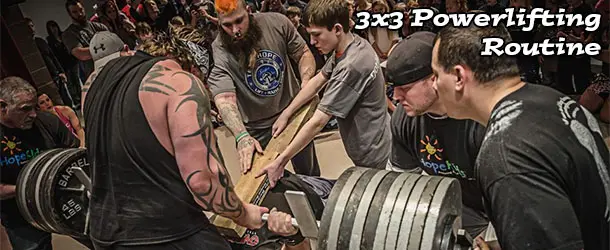
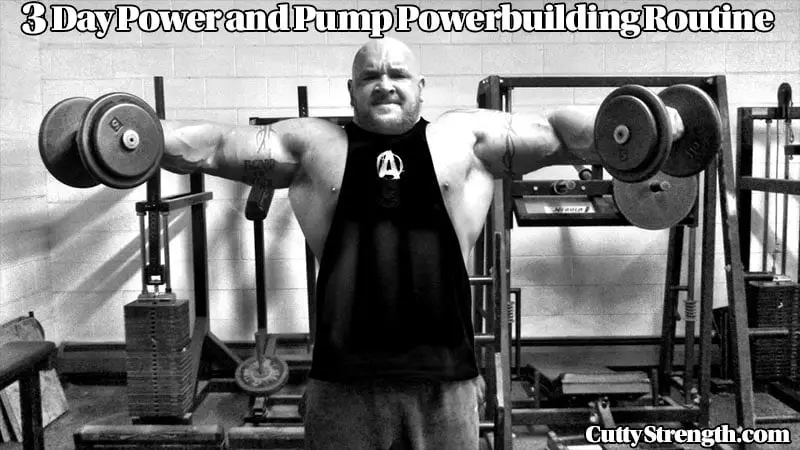

As allways..Thank you.. now i got a big idea…. ¡¡¡
Great looking program! Just finished Korte’s 3×3 so im gonna give this a go for 6 months! Thanks!
Let me know how it goes!
Cutty
Hi Cutty,
I’ve been doing the strength building routine that you have – successfully, if I do say so myself. The only problem I’ve had is that with me being me I’m consistently trying to push for more; more reps, or more weight; each week. Due to this, my attention swayed and I seemed to had lost form slightly on squats, and felt a twang in my right inner quad just over a week ago.
Luckily, I had last week off as I was on Holiday anyway, and am currently taking a break from it all this week too, as I’m feeling exhausted after all those late nights and early mornings – hey, I was on holiday….you gotta have some fun right? :)
Anyway, I’ll be getting back in to it again from Sunday onwards, and was thinking about taking a break from the strength training routine, and moving over to this one. This time I promise I’ll pay more attention to my form, and not get any twangs!!
Would you consider this a good routine to move over to? I’m looking to be in and out of the gym in about 45 minutes max.
Your mate Dave ;-)
Dave,
I’m glad to hear your progress. This would be great to move over to. Some times you can’t move up or you just aren’t “feelin it” and that’s ok. Once you start getting more acclimated with your body, you’ll know when you pour on the progress vs maybe cutting it short before you pick up a slight injury. Or you could be bull-headed like me and just say to heck with it and keep going :).
Taking a step back and focusing on form will help you out. Try to record your sets if possible so you can see everything that may be going wrong. 45 Minutes should be plenty of time to do this routine.
Let me know how you progress,
Cutty
Greeting! I’m interested in the exercises which can substitute
reverse hypers and face pulls? I train at home, I have a cage,
bench, barbell and dumbbells.
Try Romanian deadlifts for for the reverse hypers and just do bent over rear delt lateral raises like on day 2 and you should be alright.
Lucky you to have a home gym… I’m jealous. :)
thank you! and I’ve exchanged lat pull downs to pull ups, close grip seated row with T-bar row. cage and benches are a wife’s gift for wedding anniversary, because I had a crappy old bench that was no longer safe for exercise. and sorry for my bad english ;-)
Your English is just fine.. better than many. Sounds like you have a nice setup. Let me know how you progress!
Cutty
Is it too much stiff leg dead lift and Romanian dead lift in same day?
Squats and stiff leg deadlifts are on the same day. Romanian DLs aren’t in the workout.
Cutty
I know, but I asked you wich exercise can replace reverse hypers and you replied that can be replaced by Romanian DL. I tried it and it was a little too much for hamstrings.
Ah yes my apologies, that’s been a while ago hah. Try doing some walking lunges and see how that works for ya. It’ll help get you a bit more work on hammies without destroying them.
Sorry about that,
Cutty
Hi there.
I intend to take up this program. But wanted some guidance on choosing weights at the start. For example, I’ve seen some powerbuilding forums talk about starting with 60-70% of your one rep max and pile on with marginal weights as you get stronger.
Please advice
If you started at 70% of 1rm that would be a great place to start. You won’t be breaking any personal records for a couple of months but you will be able to bring up your weaknesses and recover quickly during the first couple of months. Strive to add 5 pounds every time you go in. So if you start at 225, go 230 next week, 235 next week, etc.
Good luck Arun.
Hey. Thank you for sharing this routine. I have a question – is it good routine for me?
I’ve been working out for a year. My weight is 182 lbs
1RM
bench 295
squat 400
deadlift 425
If no, could you recommend something that will work for me?
Franky, I would try her out and see how you progress. I imagine you’re getting close to needing to use some periodization… simply adding more weight will eventually stop.
I would say run her and if you cannot progress linearly, switch up to some periodization.
Is this a good routine for someone looking to lose a lot of weight along with proper diet
Yes